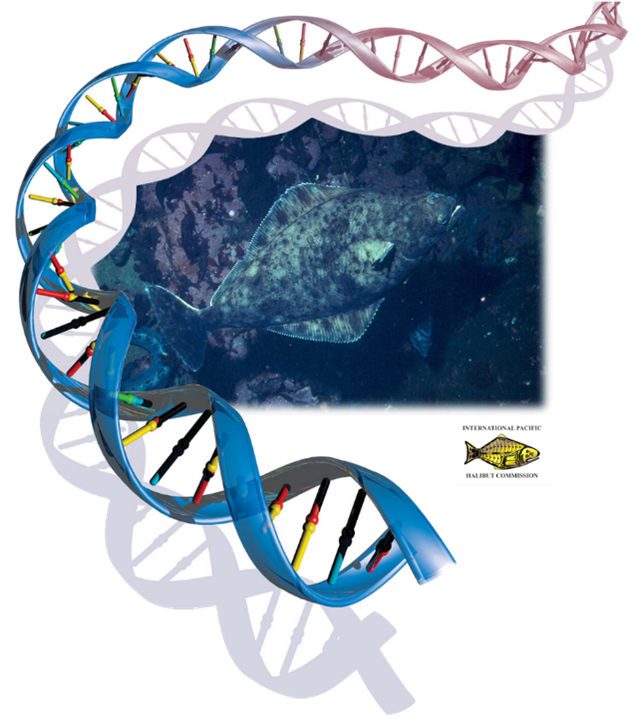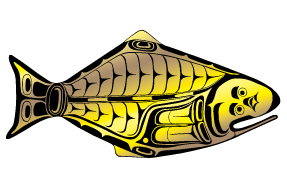The genome of an organism is the collection of genes that are organized in chromosomes and that contain the genetic material necessary for its development, growth and maintenance. The genome sequence therefore contains information on all the genes present in the genome, namely their DNA sequence and location in the genome. The IPHC has recently generated the first reference genome for the Pacific halibut (Jasonowicz et al., 2022). The Pacific halibut genome contains 24 chromosomes and is approximately 602 million base pairs in size (for reference, the current reference genome for humans also contains 24 chromosomes but is much larger at 3.1 billion base pairs in size). Additionally, the Pacific halibut genome is annotated; that is, the genomic location and function of 26,772 protein-coding genes have also been identified though this effort. In the first application of the genome, the IPHC identified a potential master sex-determining region on chromosome 9 (Jasonowicz et al., 2022). Currently, the IPHC is using the reference genome to identify single nucleotide polymorphisms (SNPs) to understand the genetic population structure of Pacific halibut in IPHC Convention waters. This resource will allow the identification of genomic regions and genes that are responsible for temporal and spatial adaptive and phenotypic characteristics and better understand genetic and evolutionary changes that occur in response to environmental and fisheries-related influences. The genome is an essential resource for understanding possible changes in the genetic constitution of the Pacific halibut population. Importantly, the genome sequence will also assist in understanding the genetic basis of growth, reproductive performance, migratory behavior, etc. in this species. Ultimately, the genome sequence of the Pacific halibut will provide the means to link genotype and phenotype in this species.

Pacific halibut genome assembly |
|
|
Genome size |
602.1 Mb |
|
Total ungapped length |
601.8 Mb |
|
Number of chromosomes |
24 |
|
Number of organelles |
1 |
|
Number of scaffolds |
52 |
|
Scaffold N50 |
27.3 Mb |
|
Scaffold L50 |
11 |
|
Number of contigs |
1,183 |
|
Contig N50 |
4.6 Mb |
|
Contig L50 |
38 |
|
GC percent |
42 |
|
Genome coverage |
91.0x |
|
Assembly level |
Chromosome |
Table. Metrics of the Pacific halibut genome assembly
Links:
Link to publication (open access): https://onlinelibrary.wiley.com/doi/10.1111/1755-0998.13641
Browse the Pacific halibut genome: https://www.ncbi.nlm.nih.gov/genome/gdv/browser/genome/?id=GCF_022539355.2
References:
Jasonowicz, A.J., Simeon, A., Zahm, M., Cabau, C., Klopp, C., Roques, C., Iampietro, C., Lluch, J., Donnadieu, C., Parrinello, H., Drinan, D.P., Hauser, L., Guiguen, Y., and Planas, J. V. 2022. Generation of a chromosome‐level genome assembly for Pacific halibut (Hippoglossus stenolepis) and characterization of its sex‐determining genomic region. Mol. Ecol. Resour. 22(7): 2685–2700. doi:10.1111/1755-0998.13641.

